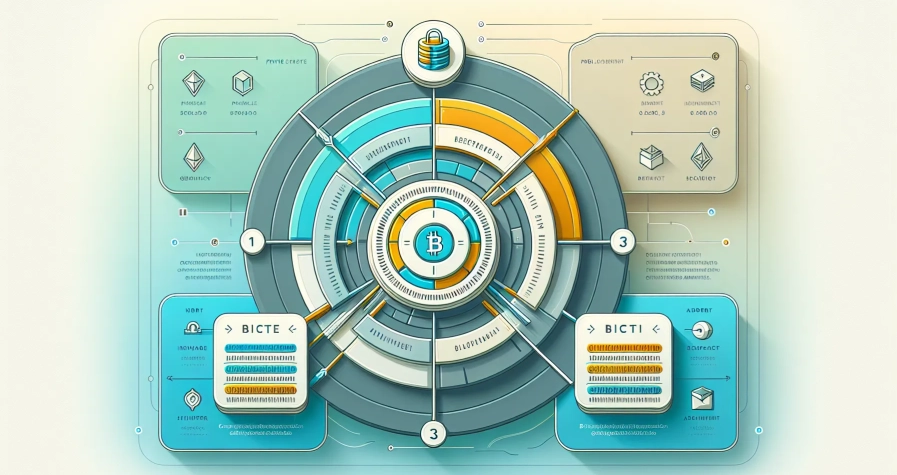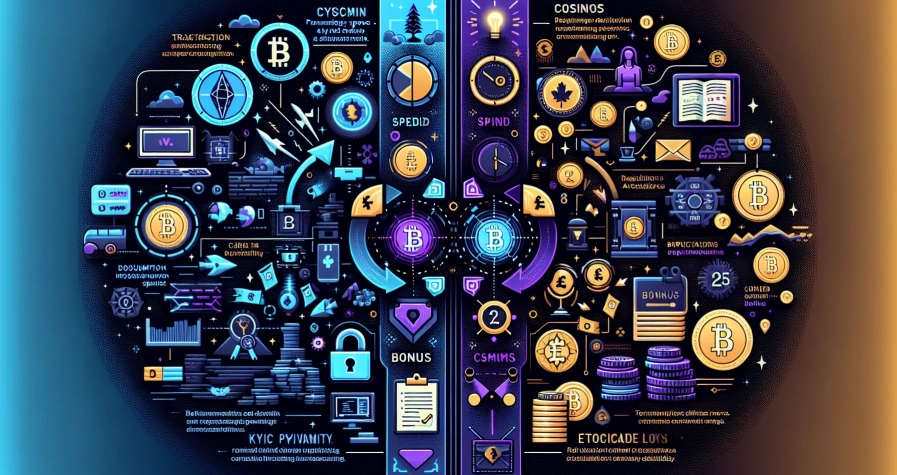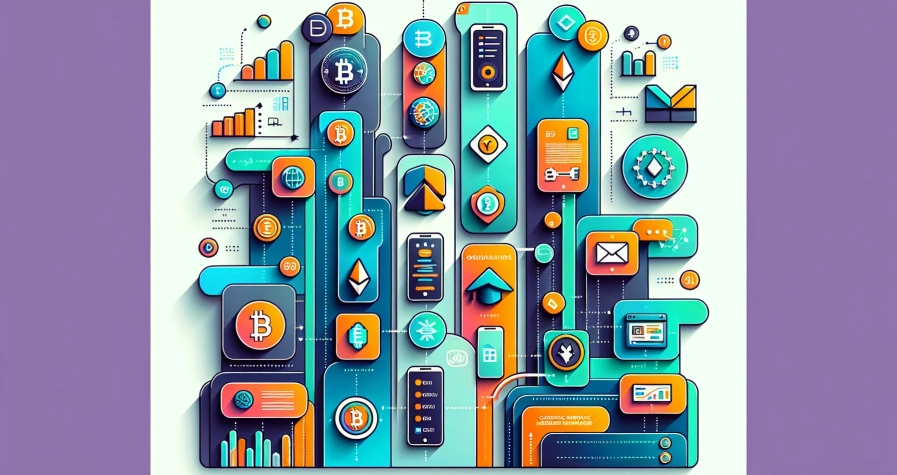Buying your first Bitcoin can feel like stepping into uncharted territory. The excitement of joining the crypto revolution is often accompanied by confusion, anxiety, and,let’s be honest,a healthy dose of “What have I gotten myself into?” If you’re reading this, you’re already ahead of the game. You’re undertaking research, which is more than many first-time buyers can say.
Bitcoin isn’t just another investment,it’s a fundamentally different kind of asset that operates by its own rules. Unlike stocks or bonds, there’s no company backing it, no quarterly earnings reports, and no customer service hotline if something goes wrong. It’s decentralized, volatile, and demands a level of personal responsibility that catches many newcomers off guard.
I’m sharing these ten lessons not to scare you away but to prepare you. These are the things I wish someone had told me before I made my first purchase,the insights that would’ve saved me sleepless nights, unnecessary fees, and more than a few facepalm moments. Whether you’re planning to invest $50 or $5,000, understanding these fundamentals will help you navigate the Bitcoin landscape with confidence and clarity.
Key Takeaways
- Bitcoin’s price volatility is extreme, with 30-day implied volatility at 48.31% and common double-digit daily swings that require strong emotional preparation.
- You don’t need to buy a whole Bitcoin—it’s divisible into 100 million satoshis, allowing you to start investing with as little as $10.
- Not all crypto exchanges offer equal security or fees; research platforms carefully after major incidents like Bybit’s $1.5 billion breach in 2025.
- Wallet security is your personal responsibility—losing your private keys or recovery phrase means permanent loss of your Bitcoin with no recovery option.
- Dollar-cost averaging helps you avoid timing the market by investing fixed amounts regularly, reducing emotional decision-making and averaging out volatility.
- Every Bitcoin transaction triggers tax obligations as the IRS treats it as property, requiring meticulous record-keeping or crypto tax software to avoid penalties.
1. Bitcoin’s Price Volatility Is More Extreme Than You Think
You’ve probably heard that Bitcoin is volatile. But until you watch your investment swing 15% in a single afternoon, you don’t really get it. Bitcoin’s price movements make traditional stock market fluctuations look tame by comparison.
Understanding Daily Price Swings
Bitcoin’s price can feel like it’s on a permanent roller coaster. In early 2025, Bitcoin surged to a historic peak near $109,000 following President Trump’s inauguration, only to plummet below $90,000 within weeks as investors grew anxious about Federal Reserve rate decisions. By April 2025, the price had tumbled further to approximately $76,500,a staggering 30% drop from its January highs.
These aren’t outlier events or market glitches. They’re part of Bitcoin’s DNA. As of November 2025, Bitcoin’s 30-day implied volatility sits at 48.31%, meaning the market expects significant price swings to continue. Double-digit percentage moves in 24 hours are common enough that seasoned Bitcoin holders barely raise an eyebrow.
What drives this volatility? Bitcoin’s relatively small market cap (compared to traditional assets like gold or the S&P 500), limited regulatory clarity, macroeconomic factors, and speculative trading all contribute. News cycles,whether it’s a country announcing Bitcoin adoption or a major exchange getting hacked,can send prices soaring or crashing.
Emotional Preparation for Market Dips
The hardest part of Bitcoin volatility isn’t the numbers,it’s the emotional toll. Watching your portfolio value drop 20% overnight triggers panic in even the most rational investors. Your brain screams, “Sell now before it gets worse.” And that’s exactly when most people lock in losses.
Before you buy your first Bitcoin, do some honest self-assessment. Can you handle seeing red in your portfolio for weeks or months? Will a 30% correction keep you up at night? If the answer is yes, consider adjusting your investment size or timeline.
Volatility cuts both ways, though. Those same dramatic swings create opportunities for gains that traditional investments rarely match. The key is mental preparation: expect turbulence, set realistic expectations, and never invest money you’ll need in the short term. Building emotional resilience now will save you from panic-selling at the worst possible moment later.
2. You Don’t Need to Buy a Whole Bitcoin
One of the biggest misconceptions holding people back from Bitcoin is thinking they need to buy an entire coin. With Bitcoin hovering around $75,000-$109,000 recently, that’s an intimidating price tag. Good news: you don’t need anywhere near that much to get started.
Understanding Satoshis and Fractional Purchases
Bitcoin is divisible into 100 million units called satoshis (or “sats” for short), named after Bitcoin’s pseudonymous creator, Satoshi Nakamoto. Think of it like dollars and cents,except Bitcoin can be broken down much, much further.
This means you can buy $10, $50, $100, or any amount that fits your budget. Most exchanges have minimum purchase requirements as low as $1 or $2. You’re not buying a whole Bitcoin: you’re buying a fraction that corresponds to but many dollars you invest.
For example, if Bitcoin costs $100,000 and you invest $500, you’d own 0.005 BTC (or 500,000 satoshis). It’s yours to hold, trade, or sell just like any other investment. There’s no premium for buying small amounts versus large ones,you’re simply acquiring a proportional piece of the total supply.
This flexibility makes Bitcoin accessible to everyone, regardless of income level. You can start small, learn how the system works, and gradually increase your holdings as you become more comfortable. Don’t let the per-coin price intimidate you,Bitcoin was designed to be divisible precisely so anyone could participate.
3. Not All Crypto Exchanges Are Created Equal
Your choice of exchange matters more than you might think. It’s not just about where you click “buy”,it’s about fees, security, user experience, and whether your funds will actually be there when you need them.
Comparing Fees and Security Features
Exchange fees vary wildly, typically ranging from 0.1% to 2% per transaction. Some platforms charge flat fees, others use tiered structures based on trading volume, and many add deposit or withdrawal fees on top. A 1.5% fee might not sound like much, but if you’re buying and selling multiple times, those percentages compound quickly and eat into your returns.
Security should be your top concern. In February 2025, Bybit suffered a devastating $1.5 billion security breach,a stark reminder that not all exchanges protect your assets equally. Before depositing funds, research the platform’s security measures: Do they offer insurance on deposits? Are customer funds held in cold storage? What’s their track record with hacks?
Regulatory compliance matters too. Exchanges operating in the U.S. under proper licenses offer more legal protections than offshore platforms with murky jurisdictions. Check whether the exchange is registered with FinCEN, follows Know Your Customer (KYC) regulations, and maintains transparent operational practices.
Beginner-Friendly vs. Advanced Platforms
If you’re just starting out, user experience trumps advanced features. Platforms like Coinbase and Fidelity Digital Assets offer intuitive interfaces designed for beginners,clean layouts, simple buy/sell buttons, and educational resources built in. You’ll pay slightly higher fees for this convenience, but it’s worth it when you’re learning the ropes.
Kraken strikes a middle ground, offering both beginner-friendly interfaces and advanced trading tools as you gain experience. More sophisticated traders eventually migrate to platforms with lower fees and more complex order types, but there’s no rush.
Don’t spread yourself too thin across multiple exchanges initially. Pick one reputable platform, learn it thoroughly, and expand only when you have specific needs that require different features. Your first exchange should prioritize ease of use, strong security, and responsive customer support over rock-bottom fees.
4. Wallet Security Is Your Personal Responsibility
Here’s the scary truth about Bitcoin: if you lose access to your wallet, your Bitcoin is gone forever. There’s no bank to call, no fraud department to dispute charges with, and no way to reset your password. You are your own bank, which means you’re also your own security guard.
Hot Wallets vs. Cold Wallets
Wallets come in two basic flavors: hot (connected to the internet) and cold (offline). Hot wallets,like the default wallet provided by your exchange or mobile wallet apps,offer convenience. You can buy, sell, and transact quickly. But that internet connection creates vulnerability. Exchanges get hacked, phones get compromised, and malware can steal credentials.
Cold wallets, typically hardware devices like Ledger or Trezor, store your Bitcoin offline. They look like USB drives and keep your private keys isolated from internet threats. For any Bitcoin you plan to hold long-term (more than a few months), cold storage isn’t optional,it’s essential.
Think of it this way: keep spending money in a hot wallet (your exchange account) and savings in a cold wallet (hardware device). You wouldn’t carry your entire life savings in your physical wallet: apply the same logic to Bitcoin.
The Importance of Private Keys and Recovery Phrases
Your private key is essentially a long, complex password that proves ownership of your Bitcoin. When you set up a wallet, you’ll receive a recovery phrase (also called a seed phrase),usually 12 to 24 random words. This phrase is the master key to your Bitcoin. Anyone with access to it controls your funds.
Write this phrase on paper (never store it digitally or take a photo) and keep it in a secure location,ideally multiple locations, like a safe and a safety deposit box. Never share it with anyone, ever. Legitimate companies will never ask for your recovery phrase.
Many Bitcoin horror stories stem from lost recovery phrases. People upgrade phones, wipe computers, or misplace paper backups, then watch helplessly as their Bitcoin becomes permanently inaccessible. Treat your recovery phrase like the deed to your house,because in the Bitcoin world, that’s exactly what it is.
5. Transaction Fees Can Eat Into Small Purchases
Nobody enjoys paying fees, but in the Bitcoin world, they’re unavoidable. What catches newcomers off guard is how much those fees can be, especially on small purchases.
Network Fees vs. Exchange Fees
You’ll encounter two types of fees: exchange fees and network fees. Exchange fees are what the platform charges for facilitating your purchase,typically 0.5% to 2% of your transaction amount. These are relatively predictable and disclosed upfront.
Network fees (also called miner fees) are payments to Bitcoin miners who process and confirm transactions on the blockchain. These fees fluctuate based on network congestion. When lots of people are transacting, fees spike. During quiet periods, they drop. You can choose to pay higher fees for faster confirmation or lower fees if you’re willing to wait.
Here’s where small purchases get expensive: if you’re buying $50 worth of Bitcoin, a $2 exchange fee plus a $3 network fee means you’ve lost 10% before you even start. Compare that to a $1,000 purchase with the same $5 in total fees,only 0.5% lost.
Before making tiny purchases, calculate the total cost. If fees exceed 5% of your purchase amount, consider waiting until you have more to invest in a single transaction. Many exchanges also offer lower fees for larger transactions or if you transfer funds via bank account rather than debit card.
One strategy: make regular, moderately-sized purchases instead of many tiny ones. Buying $200 monthly will cost far less in fees than buying $50 weekly, even though the total invested is the same over time.
6. Tax Implications Apply to Every Transaction
This is the lesson that trips up nearly every Bitcoin buyer: the IRS considers Bitcoin property, not currency, which creates tax obligations you probably didn’t anticipate.
Capital Gains and Record Keeping
Every time you sell Bitcoin, trade it for another cryptocurrency, or even use it to buy something, you trigger a taxable event. If you bought Bitcoin at $50,000 and sold it at $60,000, that $10,000 gain is taxable as capital gains,just like selling stocks.
Short-term gains (holding less than a year) are taxed at your ordinary income rate, which can be as high as 37%. Long-term gains (holding over a year) qualify for lower capital gains rates, typically 0%, 15%, or 20% depending on your income.
Here’s the kicker: trading Bitcoin for Ethereum or any other crypto also counts as a taxable sale. Many people discover this only when they receive an IRS notice years later, facing penalties and interest on unpaid taxes.
You’re responsible for tracking every transaction,the date, amount, price at purchase, and price at sale. If you make dozens or hundreds of trades, manual tracking becomes a nightmare. The IRS doesn’t care that record-keeping is difficult: they expect accurate reporting.
Using Crypto Tax Software
Thankfully, crypto tax software like CoinTracker, Koinly, and CoinLedger automate the process. These platforms connect to your exchange accounts, import transaction history, calculate gains and losses, and generate tax reports compatible with TurboTax or your accountant’s software.
The cost of tax software ($50-$200 annually depending on transaction volume) is money well spent. It saves hours of manual calculations and dramatically reduces the risk of errors that could trigger audits. Set up your tax tracking from day one,retroactively piecing together transactions from multiple exchanges is a special kind of headache you’ll want to avoid.
7. Timing the Market Is Nearly Impossible
Everyone wants to buy Bitcoin at the bottom and sell at the top. In reality, even professional traders get timing wrong more often than they’d admit. For first-time buyers, trying to time the market is a recipe for frustration and missed opportunities.
Dollar-Cost Averaging as a Strategy
Instead of trying to predict price movements, consider dollar-cost averaging (DCA),investing a fixed amount at regular intervals regardless of price. For example, buying $100 of Bitcoin every Monday, or $500 on the first of each month.
This strategy removes emotion from the equation. When prices are high, your fixed investment buys less Bitcoin. When prices drop, the same amount buys more. Over time, you average out the volatility and avoid the psychological trap of waiting for the “perfect” entry point that never comes.
DCA also prevents the common mistake of investing a lump sum right before a major correction. Imagine putting $10,000 into Bitcoin at $109,000, only to watch it drop 30% in the following months. That’s brutal. Spreading that $10,000 across ten monthly purchases of $1,000 each would’ve captured the downturn, lowering your average cost.
You won’t hit the absolute bottom with DCA, but you also won’t hit the absolute top. You’ll land somewhere in the reasonable middle, which is far better than most people manage when they try to outsmart the market. Set up automatic recurring purchases on your exchange and let consistency do the heavy lifting.
8. Scams and Phishing Attacks Are Rampant
The crypto space attracts scammers like honey attracts flies. The combination of irreversible transactions, pseudonymous accounts, and relatively new technology creates the perfect environment for fraud. Stay vigilant or pay the price,literally.
Common Red Flags to Watch For
If someone promises guaranteed returns, run. Bitcoin’s volatility makes guarantees impossible, and anyone claiming otherwise is lying. Similarly, unsolicited investment advice via social media, email, or text is almost always a scam. Celebrity impersonators on Twitter/X promising to double your Bitcoin if you send them some first? Absolutely fake.
Phishing attacks impersonate legitimate exchanges with near-perfect fake websites. You’ll receive emails claiming your account needs verification or faces suspension. The links lead to impostor sites designed to steal your login credentials. Always manually type your exchange’s URL rather than clicking email links.
Beware of pump-and-dump schemes where scammers hype unknown cryptocurrencies to inflate prices, then sell their holdings, leaving victims with worthless coins. Stick to established cryptocurrencies with transparent track records, at least initially.
Another common scam: fake customer support. You post a question in a crypto forum, and within minutes someone claiming to be from the exchange offers to help via direct message. They’ll ask for your recovery phrase or private keys under the guise of “fixing” your problem. Legitimate companies never ask for this information.
Protecting Your Account with Two-Factor Authentication
Two-factor authentication (2FA) is your first line of defence against account takeovers. With 2FA enabled, logging in requires both your password and a time-sensitive code from an authentication app (like Google Authenticator or Authy) or your phone.
Use app-based 2FA rather than SMS when possible. Phone numbers can be compromised through SIM-swap attacks, where scammers convince your mobile carrier to transfer your number to their device. Authenticator apps are tied to your physical device and much harder to compromise.
Enable 2FA on your exchange account, email account (since email is often the password reset mechanism), and any other accounts connected to your Bitcoin holdings. Yes, it adds an extra step to logging in. But that minor inconvenience is nothing compared to discovering your account has been drained.
9. Bitcoin Transactions Are Irreversible
In traditional finance, you can dispute charges, reverse transfers, and recover from most mistakes. Bitcoin doesn’t work that way. Once a transaction is confirmed on the blockchain, it’s permanent. There’s no undo button, no customer service appeal, and no refund department.
Double-Checking Wallet Addresses
Bitcoin wallet addresses are long strings of random letters and numbers,something like “1A1zP1eP5QGefi2DMPTfTL5SLmv7DivfNa.” One wrong character and your Bitcoin disappears into the void, sent to an address nobody controls or to someone you didn’t intend.
Before hitting send, verify the address at least twice. Better yet, send a small test transaction first if you’re moving a significant amount. Pay the extra network fee for peace of mind,it’s cheap insurance against a costly mistake.
Many wallets display a QR code you can scan instead of typing addresses manually, reducing the risk of typos. Use this feature whenever possible. Some malware even replaces copied addresses with the scammer’s address, so double-check that pasted addresses match what you copied.
If you send Bitcoin to the wrong address, it’s gone. No amount of pleading with exchanges or posting in forums will recover it. The blockchain doesn’t care about intent or mistakes: it executes code exactly as written. This unforgiving nature is both Bitcoin’s strength (no centralized authority can censor transactions) and its danger for careless users. Slow down, check twice, and only then click send.
10. Long-Term Holding Requires Patience and Conviction
Bitcoin rewards patience and punishes impulsive behaviour. If you’re looking for quick profits or can’t stomach watching your investment decline temporarily, Bitcoin probably isn’t for you. Long-term success requires conviction backed by understanding.
Avoiding Panic Selling
The most expensive mistake first-time Bitcoin buyers make is panic-selling during downturns. You buy at $90,000, it drops to $75,000, fear takes over, and you sell to “cut your losses.” Then Bitcoin rebounds to $95,000, and you’ve locked in a loss while missing the recovery.
Bitcoin’s long-term trajectory has been upward even though multiple 50%+ corrections along the way. Its Stock-to-Flow ratio,a measure of scarcity,increased from 97.57 in January 2025 to over 117.5 by mid-April, indicating growing scarcity as the supply becomes more limited relative to new production. This fundamental scarcity underpins Bitcoin’s long-term value proposition.
Historically, Bitcoin has recovered from every crash and eventually reached new all-time highs. Past performance doesn’t guarantee future results, but the pattern suggests that patience is rewarded while panic is punished. If you believe in Bitcoin’s long-term potential, short-term volatility becomes noise rather than signal.
Building a Personal Investment Strategy
Before buying your first Bitcoin, define your investment thesis. Why are you buying? What’s your time horizon,six months, five years, decades? How does Bitcoin fit into your overall financial picture? What percentage of your portfolio should it represent?
A common guideline: don’t invest more than you can afford to lose completely. Bitcoin is still a relatively young, volatile asset. Allocating 1-5% of your investment portfolio to Bitcoin provides exposure to its upside while limiting downside risk to your overall finances.
Decide in advance under what circumstances you’d sell. Is it a specific price target? A percentage gain? A life event like buying a house? Having predetermined exit criteria prevents emotional decision-making during volatile periods.
Remember, Bitcoin isn’t a get-rich-quick scheme. It’s a speculative asset with unique properties that may (or may not) prove transformative over time. Approach it with curiosity, caution, and a commitment to continuous learning. The investors who succeed with Bitcoin are those who do their assignments, manage their emotions, and stick to their strategy regardless of market noise.
Conclusion
Buying your first Bitcoin doesn’t have to be overwhelming, but it does require preparation. The lessons in this text,understanding volatility, securing your wallet, avoiding scams, planning for taxes, and thinking long-term,will save you costly mistakes and emotional turmoil.
Bitcoin is unlike any investment you’ve encountered before. It demands personal responsibility, emotional discipline, and continuous education. But for those willing to put in the effort, it offers exposure to an asset class that’s redefining how we think about money, ownership, and value transfer.
Start small, learn constantly, and never invest money you’ll need in the near future. Use reputable exchanges, secure your assets properly, and resist the urge to check prices every five minutes. Build a strategy that aligns with your financial goals and risk tolerance, then stick to it through the inevitable ups and downs.
The best time to learn these lessons was before your first purchase. The second-best time is right now, regardless of where you are in your Bitcoin journey. Arm yourself with knowledge, proceed with caution, and welcome to the intriguing realm of cryptocurrency.
Frequently Asked Questions
How much Bitcoin do I need to buy to get started?
You don’t need to buy a whole Bitcoin to get started. Bitcoin is divisible into 100 million units called satoshis, allowing you to invest as little as $10, $50, or any amount that fits your budget. Most exchanges have minimum purchases as low as $1-$2.
What is dollar-cost averaging and why should I use it for Bitcoin?
Dollar-cost averaging means investing a fixed amount at regular intervals regardless of price. This strategy removes emotion from timing the market, averages out volatility, and prevents investing a lump sum right before a major price correction, making it ideal for Bitcoin’s unpredictable nature.
Are Bitcoin transactions taxable?
Yes, the IRS treats Bitcoin as property, making every sale, trade, or purchase a taxable event. Short-term gains are taxed at ordinary income rates, while long-term holdings over a year qualify for lower capital gains rates. Crypto tax software can help automate record-keeping.
What’s the difference between a hot wallet and a cold wallet?
Hot wallets are connected to the internet and offer convenience for frequent trading but are vulnerable to hacks. Cold wallets are offline hardware devices that store Bitcoin securely, making them essential for long-term holdings and protecting against online threats.
Can I recover my Bitcoin if I lose my wallet password?
No, there’s no customer service or password reset for Bitcoin. If you lose access to your wallet and don’t have your recovery phrase (12-24 word seed phrase), your Bitcoin is permanently inaccessible. This makes securely storing your recovery phrase absolutely critical.
How volatile is Bitcoin compared to traditional investments?
Bitcoin is significantly more volatile than stocks or bonds. Price swings of 15% in a single day are common, with 30% drops within weeks possible. As of November 2025, Bitcoin’s 30-day implied volatility sits at 48.31%, making emotional preparation essential before investing.






